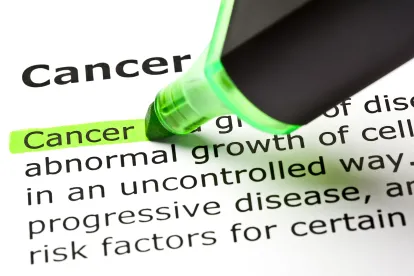On April 14, 2022, the United States Environmental Protection Agency released an updated draft risk assessment for formaldehyde, in which it links long-term, low-dose inhalation of the common chemical to leukemia and various cancers involving the head and neck. EPA has also identified potential links to non-cancer health outcomes, including sensory irritation, respiratory problems, reproductive and developmental toxicity, and nervous system effects. The risk assessment associates these potentially adverse health effects with lifetime doses even lower than those identified by EPA in its 2010 draft, which EPA had agreed to revisit after the scientific community and industry stakeholders criticized its methodology.
If the risk assessment is finalized, EPA will officially designate formaldehyde as a known human carcinogen for the first time. Classification as a known human carcinogen could increase litigation risk for companies who manufacture formaldehyde or whose products may contain the chemical. The classification could also invite new regulations or even bans under the Toxic Substances Control Act (TSCA), pursuant to which EPA is currently separately evaluating formaldehyde’s potential health and environmental risks.
The impact of EPA’s conclusions could be far-ranging—formaldehyde is commonly used in a wide range of industrial and consumer products, including carpeting, flooring, furniture, foam insulation, paints, wood glue, adhesives, cosmetics, and fragrances. Given the potential business disruption and litigation threat, affected companies should carefully monitor the draft risk assessment as it proceeds through the public comment period and scientific review process.
Risk Assessment Conclusions
In the draft risk assessment, EPA has drawn conclusions about the weight of the evidence supporting a causal link between long-term formaldehyde exposure and various cancer and non-cancer health effects. EPA’s judgments of the evidence regarding each potential health effect fall into four categories:
-
Evidence “demonstrating” a causal link. According to EPA, the evidence regarding each of the following health effects “signifies a very high level of certainty that formaldehyde exposure caused the health effect”:
-
Nasopharyngeal cancer
-
Myeloid leukemia
-
Sinonasal cancer
-
Sensory irritation
-
Respiratory tract pathology
-
-
Evidence “indicating” a causal link. According to EPA, the evidence regarding each of the following health effects “reflects a reasonable certainty that the relationship between formaldehyde exposure and the health outcome was causal, although there may be some outstanding questions that remain”:
-
Decreased pulmonary function
-
Allergic conditions
-
Current asthma symptoms or degree of asthma control
-
Female reproductive or developmental toxicity
-
Male reproductive toxicity
-
-
Evidence “suggesting” a causal link. According to EPA, the evidence regarding each of the following health effects “conveys some concern that formaldehyde may cause a particular health outcome, but there were very few studies that contributed to the evaluation, the evidence was very weak or conflicting, or the methodological conduct of the studies was poor”:
-
Oropharyngeal / hypopharyngeal cancer
-
Multiple myeloma
-
Hodgkin lymphoma
-
Nervous system effects
-
-
Evidence “inadequate” to make a determination. According to EPA, the evidence regarding each of the following health effects “conveys either a lack of information or an inability to interpret the available evidence” and “generally indicates that further research is needed”:
-
Laryngeal cancer
-
Lymphatic leukemia
-
Next Steps
EPA is accepting comments on the draft risk assessment through June 13, 2022. Companies whose operations may be impacted by EPA’s conclusions should carefully monitor the comment docket and consider submitting their own comments. Following the public comment period, the National Academies of Sciences, Engineering, and Medicine will conduct a full scientific review of the Agency’s findings.
Companies should also keep EPA’s ongoing TSCA risk evaluation for formaldehyde on their radars. EPA’s draft IRIS risk assessment almost certainly foreshadows the conclusions EPA will reach in its TSCA risk evaluation. EPA cannot issue regulations under its IRIS program, but it is authorized to regulate or even ban chemicals if unreasonable risks to human health or the environment are identified in a TSCA risk evaluation. Although TSCA requires EPA to issue a final risk evaluation for formaldehyde by December 2022, the Agency has already indicated that it could be delayed at least until June 2023 and possibly as late as December 2024.





 />i
/>i

